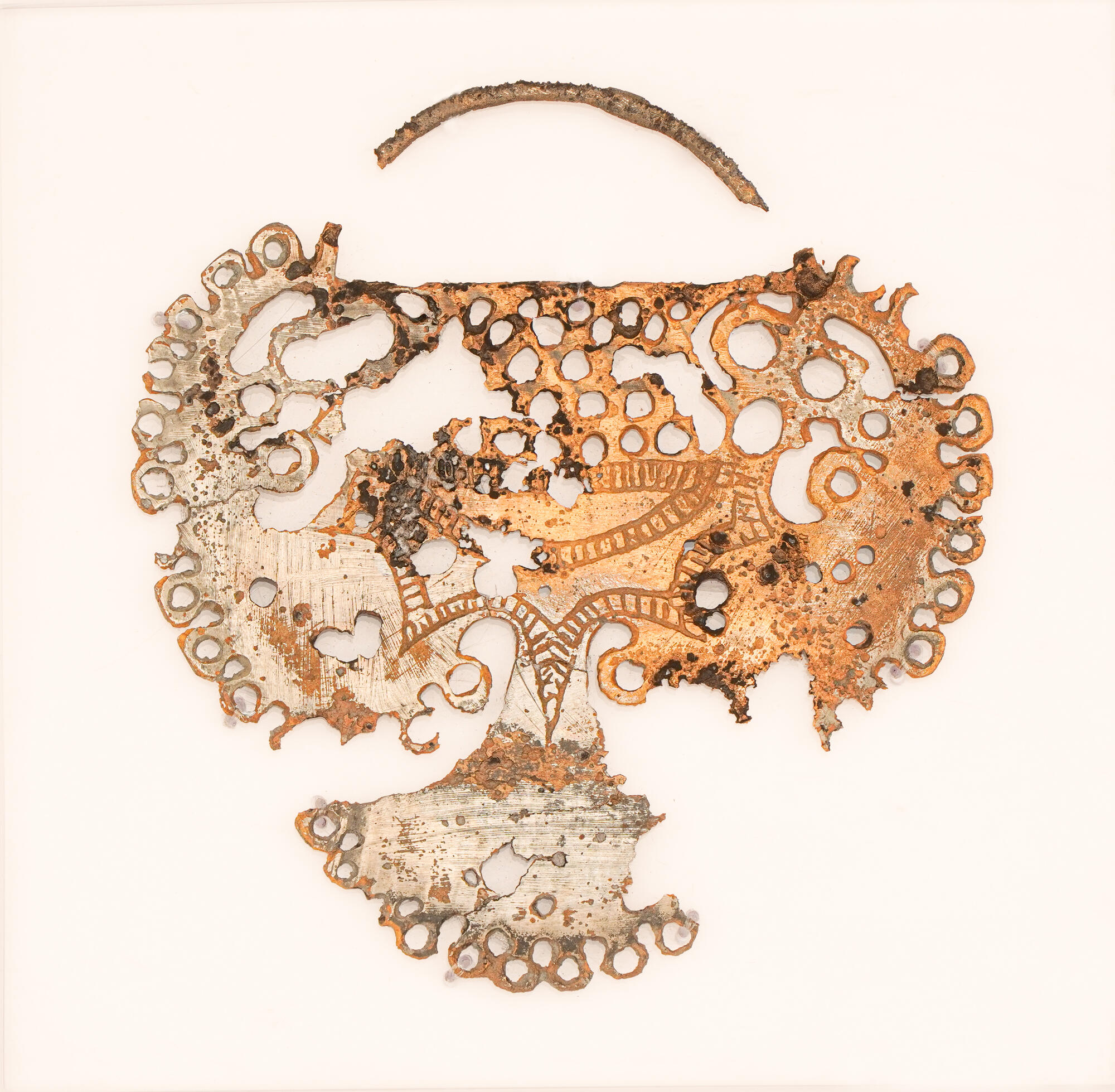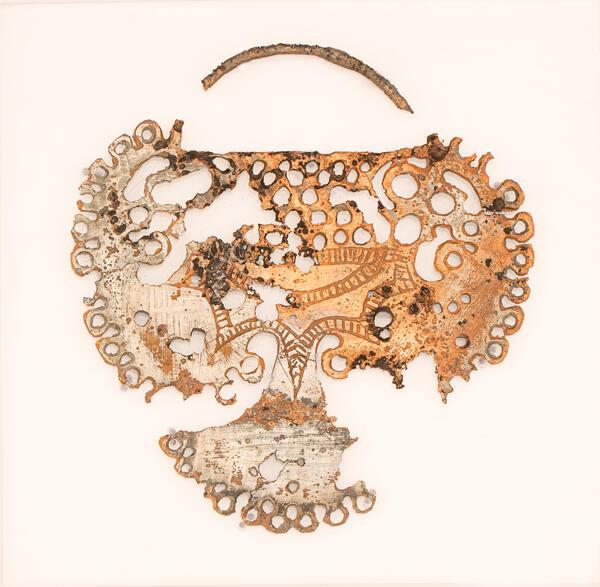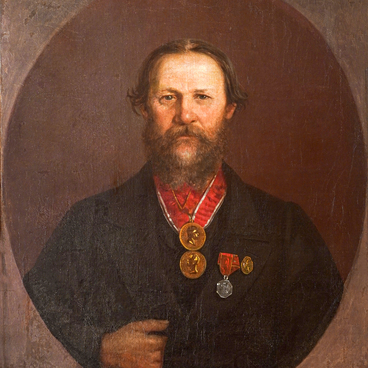Since ancient times, people have wanted to decorate themselves. Ornaments used to serve two purposes simultaneously. The first one was to make oneself beautiful, which is why women always had many more ornaments — various pendants, rings and earrings — than men. The second purpose of ornaments was connected with their ritual and religious meaning.
Temple rings have been one of the main decorations of Slavic women since ancient times. Each tribe had their own characteristic form of rings. For example, the rings made by the Vyatichi had three, five or seven flat protrusions — blades, so they are called blade rings. Temple rings indicated the tribe in which the woman was born. If, for example, a Polan woman married a Vyatichi man, she continued to wear the rings characteristic of the Polans, but her daughters wore the blade-shaped rings of their father’s tribe. Temple rings were braided into the hair near the temples. The hair was combed out in a straight parting from the back of the head to the temples. After that, braids were made on both sides, about a little finger’s thickness. A three-strand braid went from the temple behind the ear. The first ring, the smallest one, was plaited into the top braid near the temple, and the next, bigger one, a little lower. Up to four rings could be braided in this way. Temple rings could be attached to a maiden’s headband or a married woman’s headdress. The number of rings worn at the same time was different and not necessarily the same on both sides. Temple rings were worn with regard to the age of the girl or woman. Girls wore practically no rings, or only simple ones, hand-bent and made of wire. Older girls, brides and adult women wore the finest temple rings. Older women would give up their temple rings and pass them on to the next generation.
There are many different kinds of rings. Rayed temple rings served as prototypes for Slavic seven-ray and seven-blade ornaments. Seven-ray temple rings, like others, are divided into several subtypes: temple rings with a smooth shield or classical ones, temple rings with a shank on the shield and with five teeth on the upper edge of the shield, temple rings with shamrock-shaped rays and with an ornamented shield. The ray and blade ornaments were both cast.
The Kolomna Local History Museum displays a set of jewelry from an Old Russian Slavonic burial site in the village of Malivo, Kolomna district. These jewels were discovered by villagers during construction works and handed over to the museum in 1990.
Temple rings have been one of the main decorations of Slavic women since ancient times. Each tribe had their own characteristic form of rings. For example, the rings made by the Vyatichi had three, five or seven flat protrusions — blades, so they are called blade rings. Temple rings indicated the tribe in which the woman was born. If, for example, a Polan woman married a Vyatichi man, she continued to wear the rings characteristic of the Polans, but her daughters wore the blade-shaped rings of their father’s tribe. Temple rings were braided into the hair near the temples. The hair was combed out in a straight parting from the back of the head to the temples. After that, braids were made on both sides, about a little finger’s thickness. A three-strand braid went from the temple behind the ear. The first ring, the smallest one, was plaited into the top braid near the temple, and the next, bigger one, a little lower. Up to four rings could be braided in this way. Temple rings could be attached to a maiden’s headband or a married woman’s headdress. The number of rings worn at the same time was different and not necessarily the same on both sides. Temple rings were worn with regard to the age of the girl or woman. Girls wore practically no rings, or only simple ones, hand-bent and made of wire. Older girls, brides and adult women wore the finest temple rings. Older women would give up their temple rings and pass them on to the next generation.
There are many different kinds of rings. Rayed temple rings served as prototypes for Slavic seven-ray and seven-blade ornaments. Seven-ray temple rings, like others, are divided into several subtypes: temple rings with a smooth shield or classical ones, temple rings with a shank on the shield and with five teeth on the upper edge of the shield, temple rings with shamrock-shaped rays and with an ornamented shield. The ray and blade ornaments were both cast.
The Kolomna Local History Museum displays a set of jewelry from an Old Russian Slavonic burial site in the village of Malivo, Kolomna district. These jewels were discovered by villagers during construction works and handed over to the museum in 1990.



